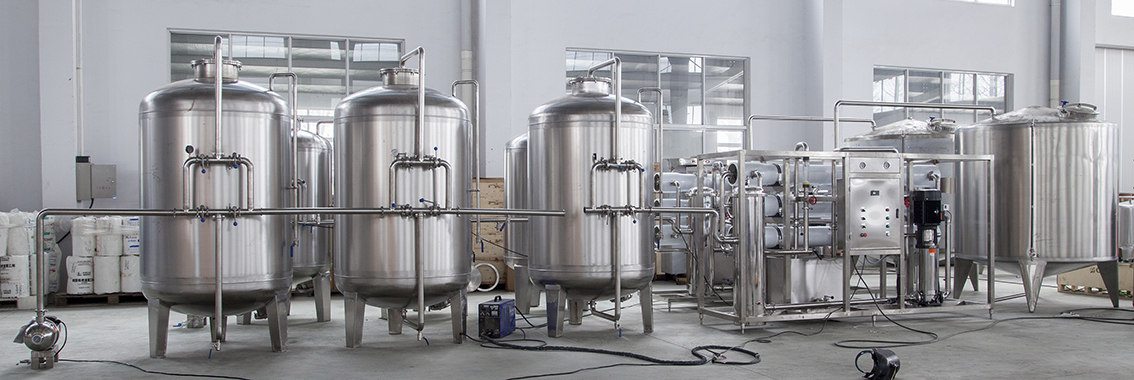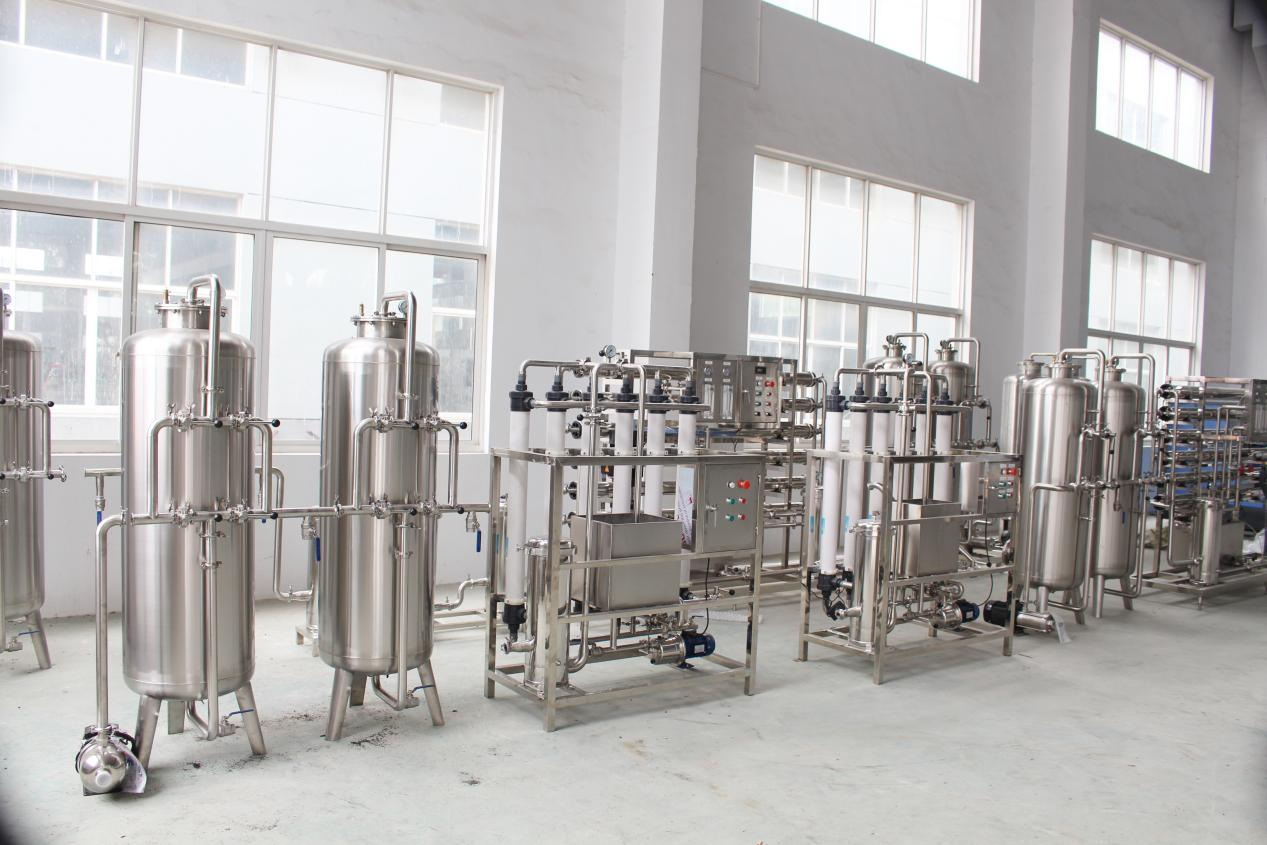
Ultrapure Water Equipment employs pre-treatment, reverse osmosis (RO), ultrapurification, and post-treatment methods to nearly eliminate conductive media from water. It also removes undissociated colloids, gases, and organic substances to very low levels.
Pure Water Equipment primarily uses reverse osmosis membrane technology. Its principle is to apply pressure to water so that water molecules and ionized mineral elements pass through the RO membrane. Most dissolved inorganic salts (including heavy metals), organic matter, bacteria, and viruses cannot pass through the membrane, ensuring a strict separation between purified water and concentrated water. The pore size of the RO membrane is only 0.0001 microns, whereas viruses range from 0.02 to 0.4 microns and bacteria from 0.4 to 1 micron.
1. Different Applications
(1) Ultrapure Water Equipment:
A. Production and cleaning of ultrapure materials and reagents.
B. Production and cleaning of electronic products.
C. Production of battery products.
D. Production and cleaning of semiconductor products.
E. Production and cleaning of circuit boards.
F. Production of other high-tech precision products.
(2) Pure Water Equipment:
A. Chemical water treatment in power plants.
B. Ultrapure water for electronics, semiconductors, and precision machinery industries.
C. Preparation of water for food, beverages, and drinking water.
D. Small pure water stations and group drinking water.
E. Water for fine chemical and cutting-edge scientific fields.
F. High-purity water preparation for various industries.
G. Process water for the pharmaceutical industry.
H. Desalination of seawater and brackish water.
2. Different Water Conductivity
· Ultrapure Water: The output water quality has a resistivity of >15MΩ.cm, with industry standards ranging from 0.5MΩ.cm to 18MΩ.cm, depending on the required water quality.
· Pure Water: It is categorized as industrial pure water and drinking pure water.
In 25℃,
· Ordinary pure water: EC = 1~10 µS/cm.
· High-purity water: EC = 0.1~1.0 µS/cm.
· Ultrapure water: EC = 0.1~0.055 µS/cm
· Drinking pure water: EC=1~10 µS/cm (national standard).

3. Different Process Flows
Ultrapure Water Equipment Process Flows:
(1) Traditional Process:
· Pre-treatment system → RO system → Intermediate water tank → Rough mixed bed → Fine mixed bed → Pure water tank → Pure water pump → UV sterilizer → Polishing mixed bed → Fine filter → Water user (≥18MΩ.cm).
· Pre-treatment system → Reverse osmosis system → Intermediate water tank → Pure water pump → Coarse mixed bed → Fine mixed bed → UV sterilizer → Precision filter → Water consumption point (≥15 MΩ·cm)
(2) Latest Processes:
· Pre-treatment → RO → Intermediate tank → Pump → EDI unit → Pure water tank → Pure water pump → UV sterilizer → Polishing mixed bed → 0.2 or 0.5 µm fine filter → Water user (≥18MΩ.cm).
· Pre-treatment → RO → PH adjustment → Intermediate tank → Second-stage RO (positive-charge RO membrane) → Pure water tank → Pure water pump → EDI unit → UV sterilizer → 0.2 or 0.5 µm fine filter → Water user (≥17MΩ.cm).
· Pre-treatment → RO → Intermediate tank → Pump → EDI unit → Pure water tank → Pure water pump → UV sterilizer → 0.2 or 0.5 µm fine filter → Water user (≥15MΩ.cm).
Pure Water Equipment Process Flows:
(1) Ion Exchange Method:
· Raw water → Pressurized raw water pump → Multi-media filter → Activated carbon filter → Water softener → Fine filter → Cation resin bed → Anion resin bed → Mixed resin bed → Micropore filter → Water point.
(2) Two-Stage RO Method:
· Raw water → Pressurized raw water pump → Multi-media filter → Activated carbon filter → Water softener → Fine filter → First-stage RO → PH adjustment → Intermediate tank → Second-stage RO (positive-charge membrane) → Pure water tank → Pure water pump → Micropore filter → Water point.
(3) EDI Method:
· Raw water → Pressurized raw water pump → Multi-media filter → Activated carbon filter → Water softener → Fine filter → First-stage RO → Intermediate tank → Intermediate pump → EDI system → Micropore filter → Water point.

 简体中文
简体中文 Pусский
Pусский
 News Detail
News Detail 










